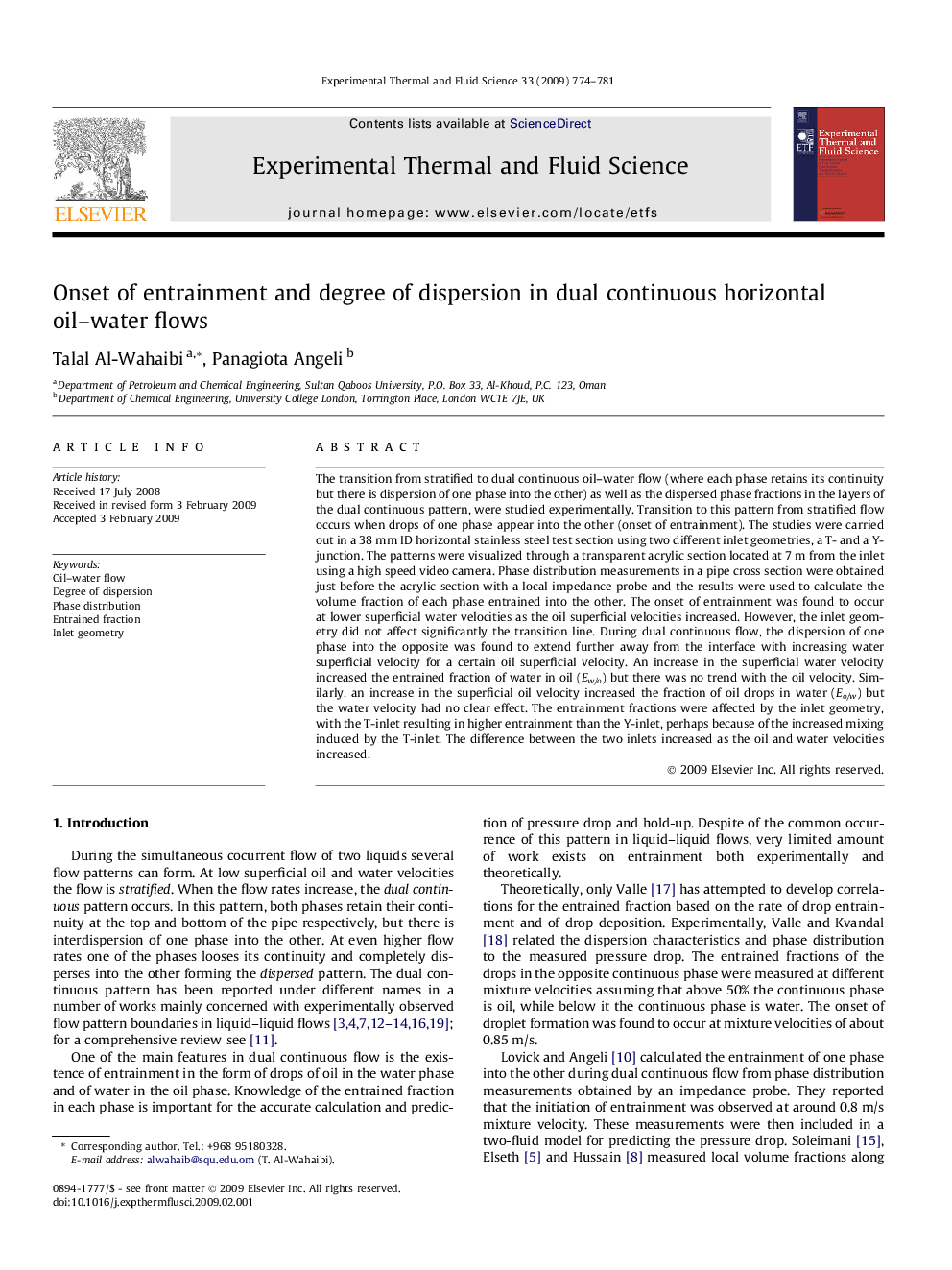| کد مقاله | کد نشریه | سال انتشار | مقاله انگلیسی | نسخه تمام متن |
|---|---|---|---|---|
| 652138 | 885004 | 2009 | 8 صفحه PDF | دانلود رایگان |
عنوان انگلیسی مقاله ISI
Onset of entrainment and degree of dispersion in dual continuous horizontal oil-water flows
دانلود مقاله + سفارش ترجمه
دانلود مقاله ISI انگلیسی
رایگان برای ایرانیان
کلمات کلیدی
موضوعات مرتبط
مهندسی و علوم پایه
مهندسی شیمی
جریان سیال و فرایندهای انتقال
پیش نمایش صفحه اول مقاله

چکیده انگلیسی
The transition from stratified to dual continuous oil-water flow (where each phase retains its continuity but there is dispersion of one phase into the other) as well as the dispersed phase fractions in the layers of the dual continuous pattern, were studied experimentally. Transition to this pattern from stratified flow occurs when drops of one phase appear into the other (onset of entrainment). The studies were carried out in a 38Â mm ID horizontal stainless steel test section using two different inlet geometries, a T- and a Y-junction. The patterns were visualized through a transparent acrylic section located at 7Â m from the inlet using a high speed video camera. Phase distribution measurements in a pipe cross section were obtained just before the acrylic section with a local impedance probe and the results were used to calculate the volume fraction of each phase entrained into the other. The onset of entrainment was found to occur at lower superficial water velocities as the oil superficial velocities increased. However, the inlet geometry did not affect significantly the transition line. During dual continuous flow, the dispersion of one phase into the opposite was found to extend further away from the interface with increasing water superficial velocity for a certain oil superficial velocity. An increase in the superficial water velocity increased the entrained fraction of water in oil (Ew/o) but there was no trend with the oil velocity. Similarly, an increase in the superficial oil velocity increased the fraction of oil drops in water (Eo/w) but the water velocity had no clear effect. The entrainment fractions were affected by the inlet geometry, with the T-inlet resulting in higher entrainment than the Y-inlet, perhaps because of the increased mixing induced by the T-inlet. The difference between the two inlets increased as the oil and water velocities increased.
ناشر
Database: Elsevier - ScienceDirect (ساینس دایرکت)
Journal: Experimental Thermal and Fluid Science - Volume 33, Issue 4, April 2009, Pages 774-781
Journal: Experimental Thermal and Fluid Science - Volume 33, Issue 4, April 2009, Pages 774-781
نویسندگان
Talal Al-Wahaibi, Panagiota Angeli,